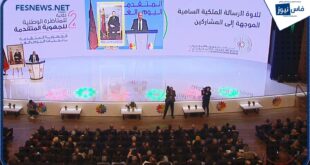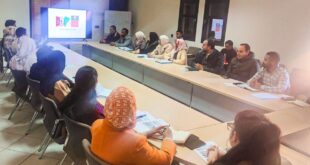Rabat – The Emergency Police in Morocco has undergone a qualitative shift with the emergence of “Command and Coordination Rooms” as a new model for integrated security service. This model incorporates many advanced services such as surveillance cameras, IT applications, and wired and wireless communication.
The Emergency Police is considered one of the most important pillars of public security in Morocco, thanks to its role in receiving and responding to emergency calls quickly and effectively. The Command and Coordination Rooms have significantly improved the efficiency of the Emergency Police by providing an integrated work environment that facilitates communication and coordination among all team members.
The successes achieved by the Command and Coordination Rooms are attributed to the adoption of modern technology, such as artificial intelligence, in improving the work of the Emergency Police. Through applications for tracking and monitoring stolen vehicle plates and computerized identification of wanted individuals, the Emergency Police has become more effective in combating crime and protecting citizens.
The Command and Coordination Rooms have reduced the response time in public streets to within five minutes, thanks to rapid communication and effective coordination among all team members. They have also contributed to streamlining regular operations and better managing the resources of the Emergency Police.
The Command and Coordination Rooms are considered an important step in the development of the Emergency Police in Morocco, integrating modern technology with human expertise to improve the efficiency of security services and control crime risks.
The General Directorate of National Security in Morocco announced a comprehensive development of Emergency Police services and Command and Coordination Rooms, as part of the comprehensive reform of the police service that began in the second half of 2015.
These developments aim to enhance the preventive aspect of police work and rationalize their interventions in public streets. The most prominent changes include:
- Transforming traditional communication rooms into integrated command and coordination rooms equipped with the latest technologies.
- Integrating urban camera surveillance systems into these rooms.
- Developing an emergency call reception system through the toll-free number 19 to improve response speed.
- Directly connecting the rooms with mobile emergency police patrols.
- Using artificial intelligence applications and advanced databases to support security work.
These reforms have succeeded in reducing police response time to within five minutes, contributing to improving the quality of security services provided to citizens.
These developments come as part of the General Directorate of National Security’s strategy to modernize police work methods and enhance the concept of community policing, while benefiting from modern technologies to serve public security.
Source: Fez News website
 فاس نيوز ميديا جريدة الكترونية جهوية تعنى بشؤون و أخبار جهة فاس مكناس – متجددة على مدار الساعة
فاس نيوز ميديا جريدة الكترونية جهوية تعنى بشؤون و أخبار جهة فاس مكناس – متجددة على مدار الساعة













